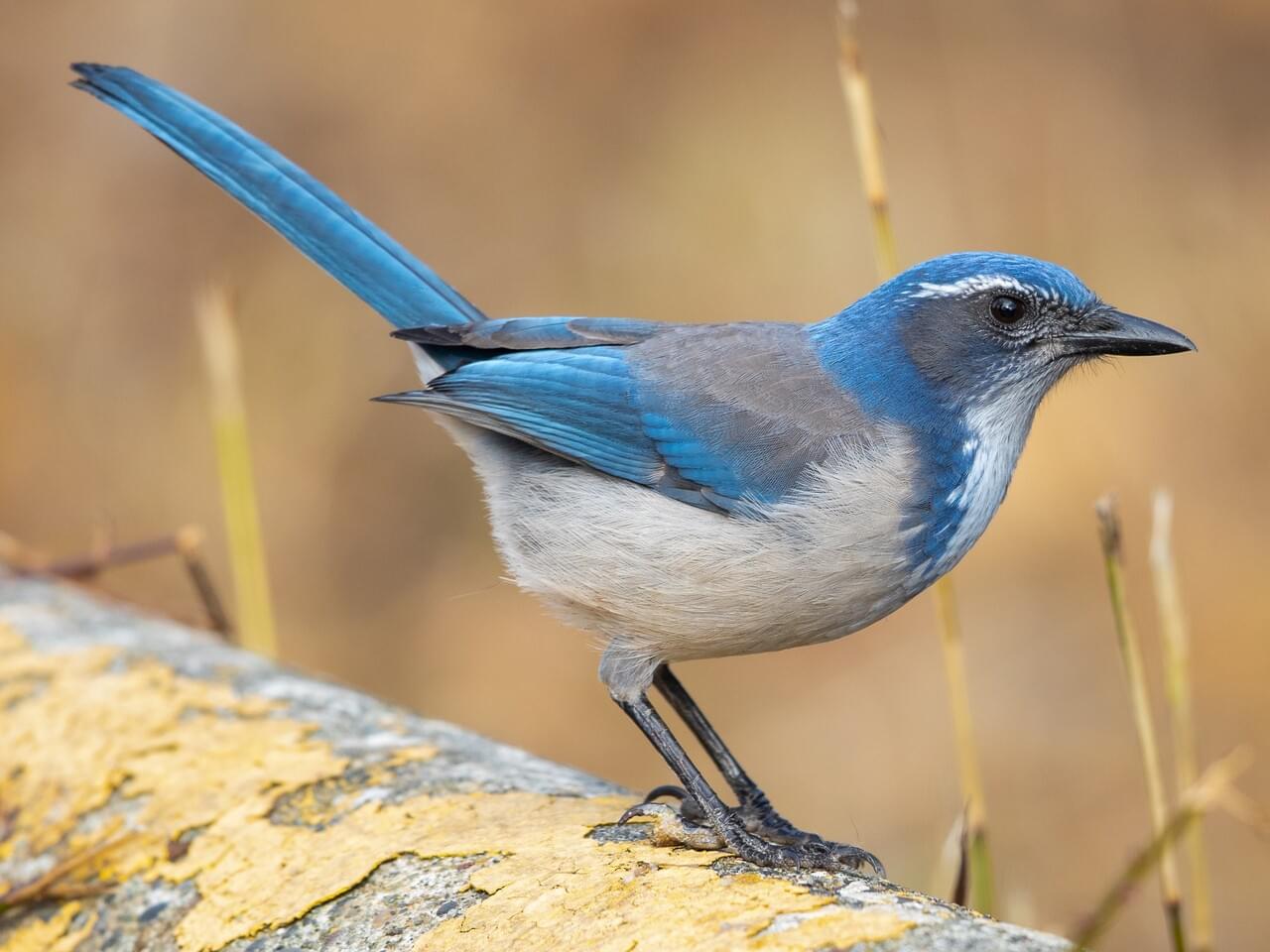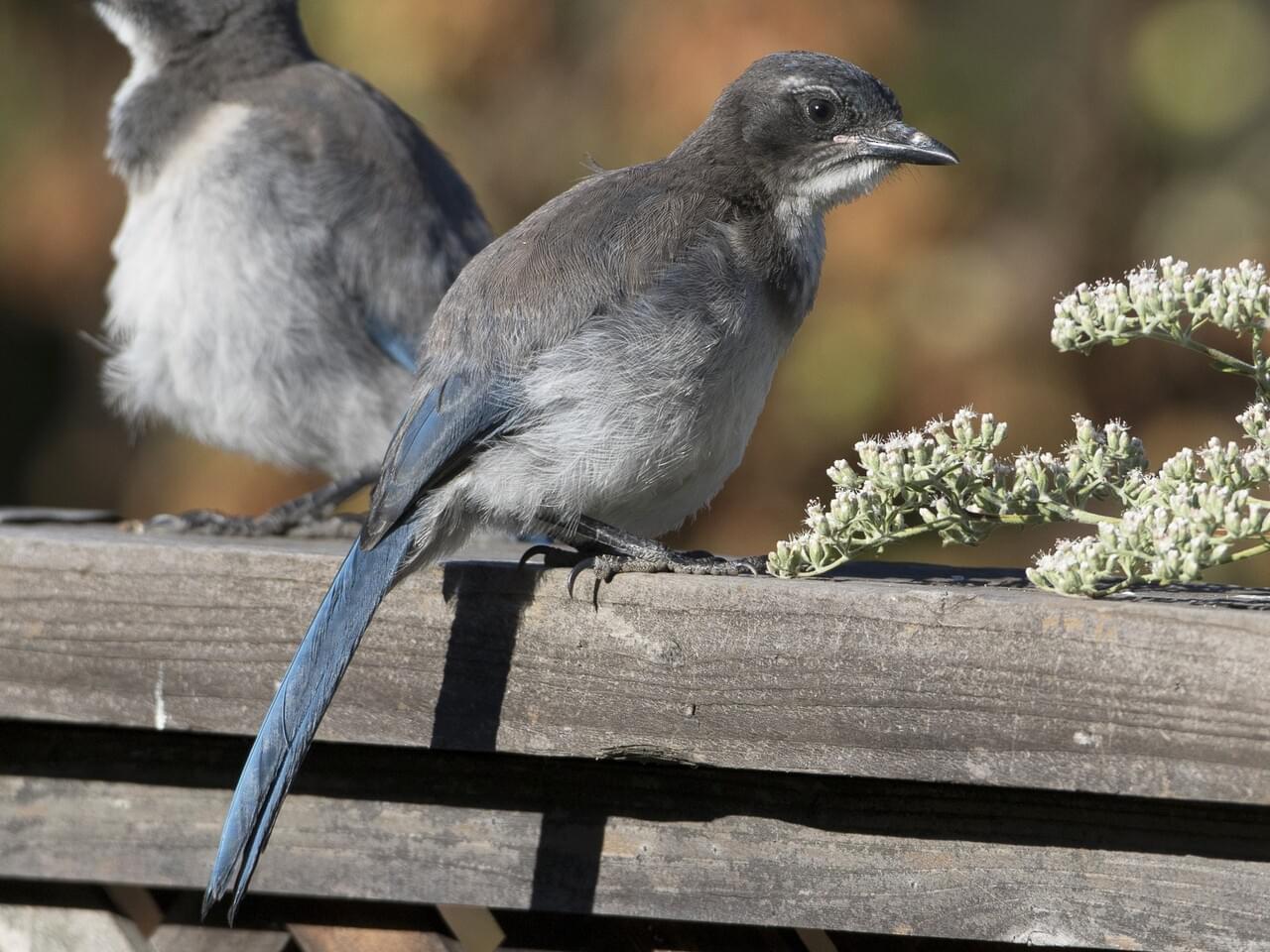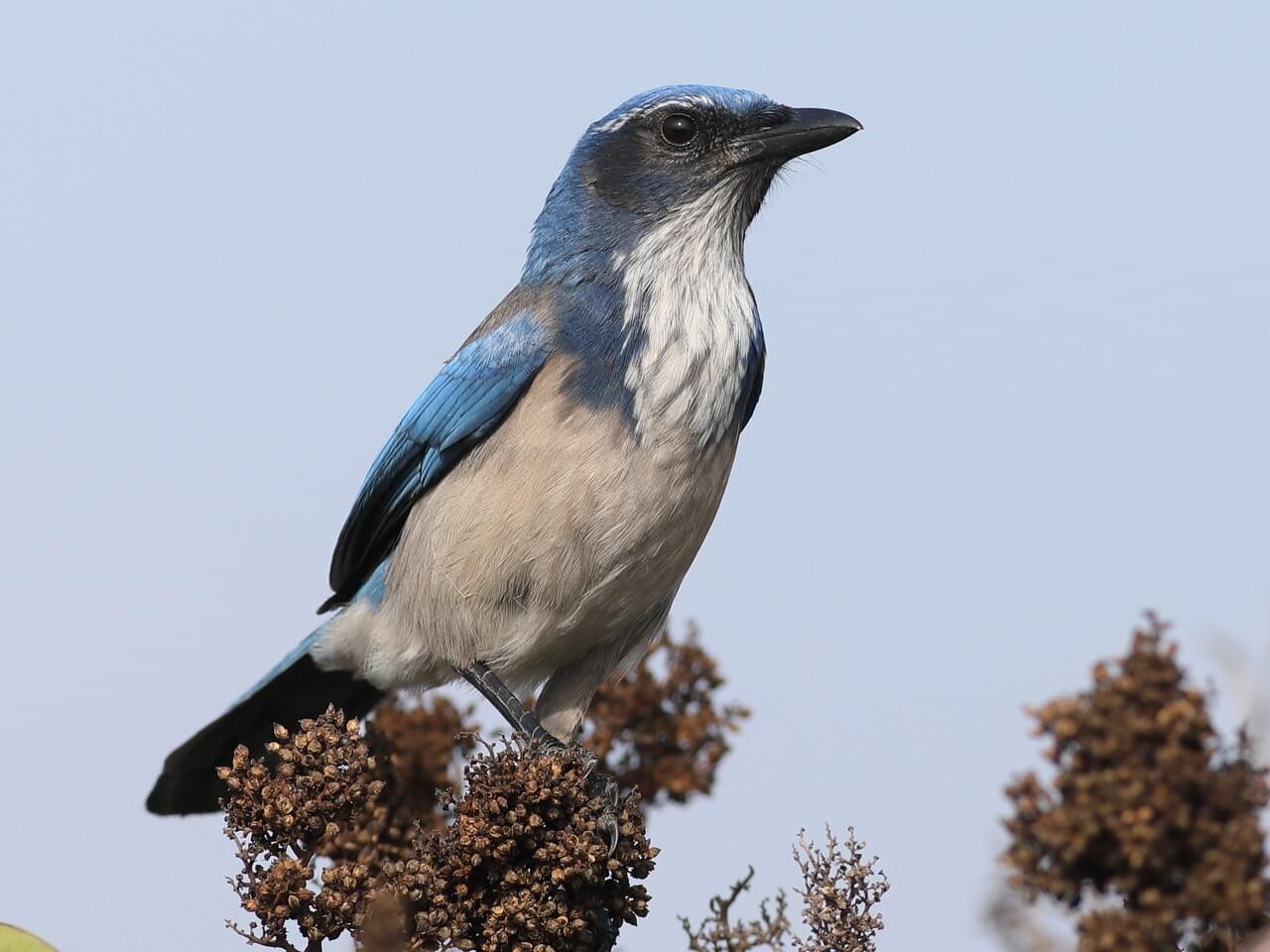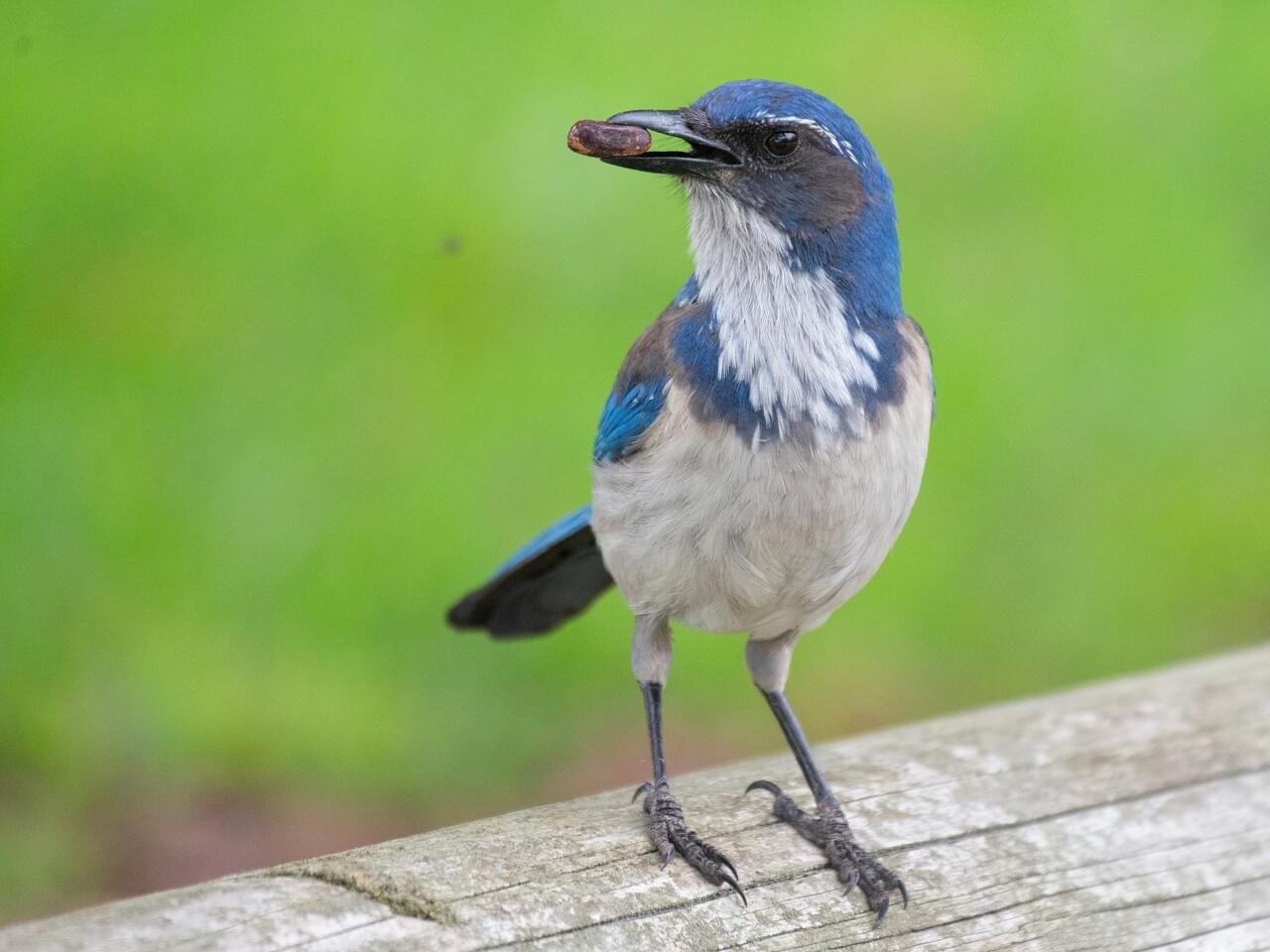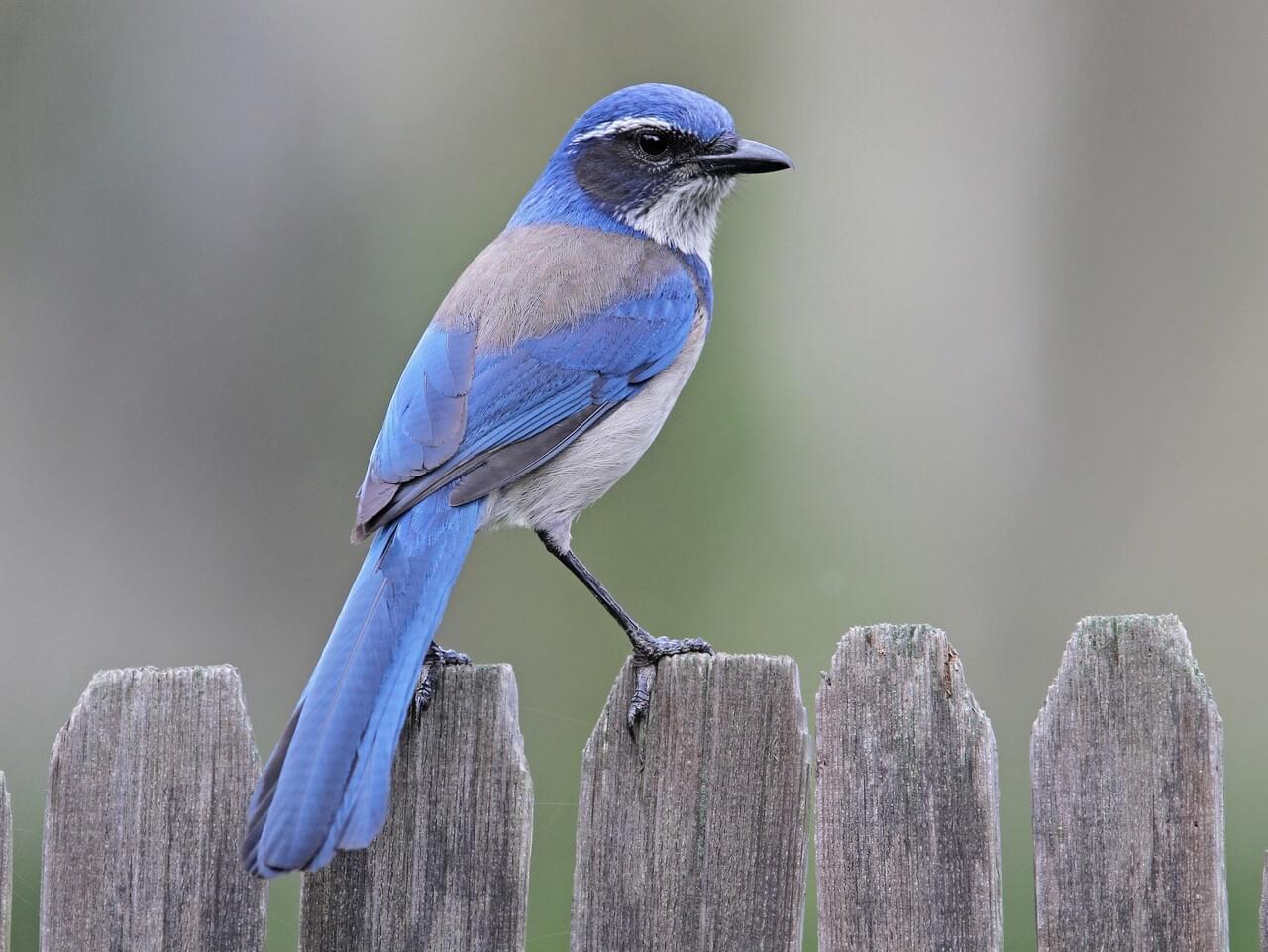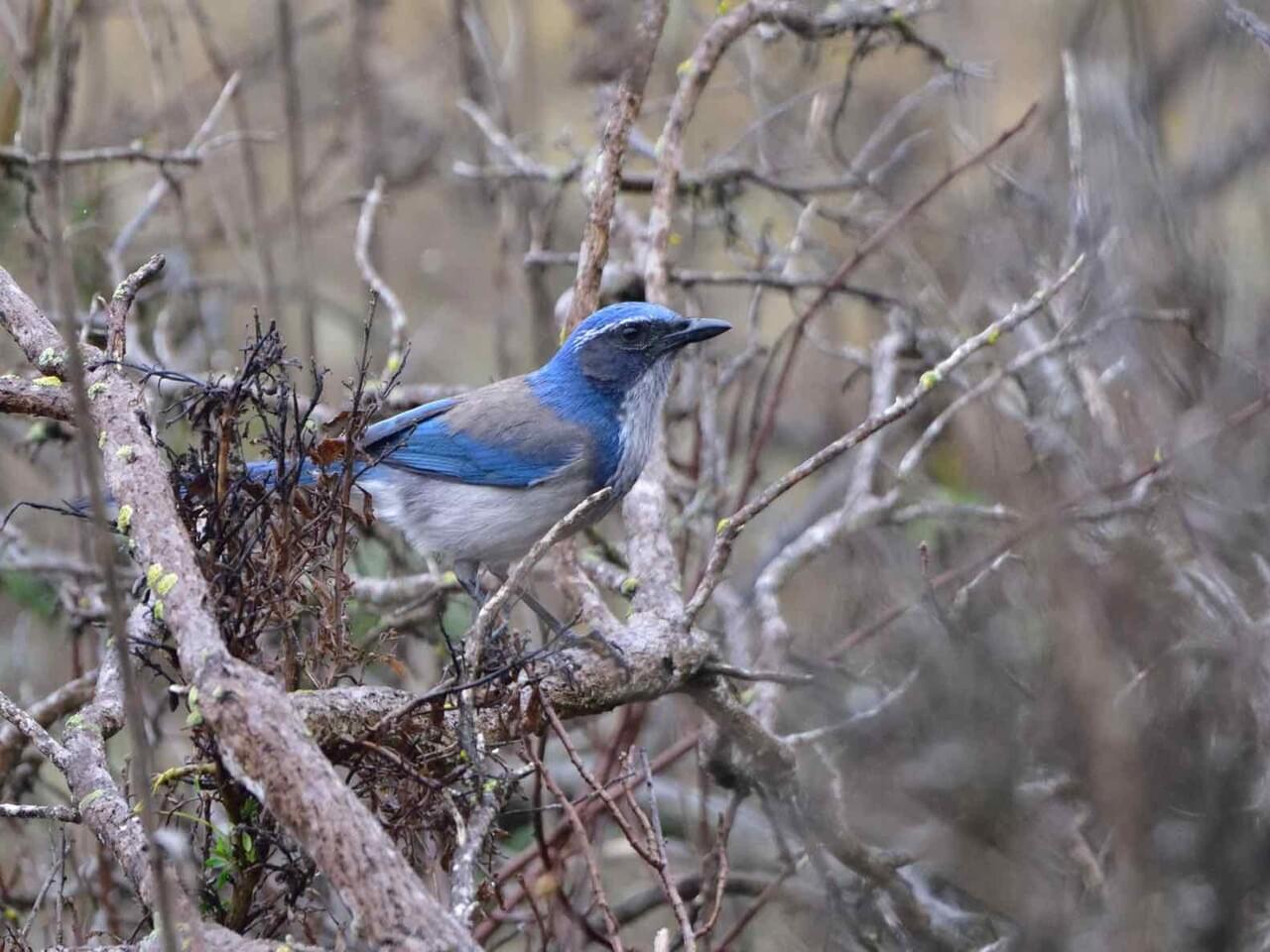 Photo ©
Rick Leinen
Photo ©
Rick Leinen
California Scrub-Jay
Regional Species
The “blue jay” of dry lowlands along the Pacific seaboard, the California Scrub-Jay combines deep azure blue, clean white underparts, and soft gray-brown. It looks very similar to the Woodhouse's Scrub-Jay (they were considered the same species until 2016), but is brighter and more contrasting, with a bold blue breast band. The rounded, crestless head immediately sets it apart from Steller’s Jays. These birds are a fixture of dry shrublands, oak woodlands, and backyards from Washington state south to Baja California.
Range
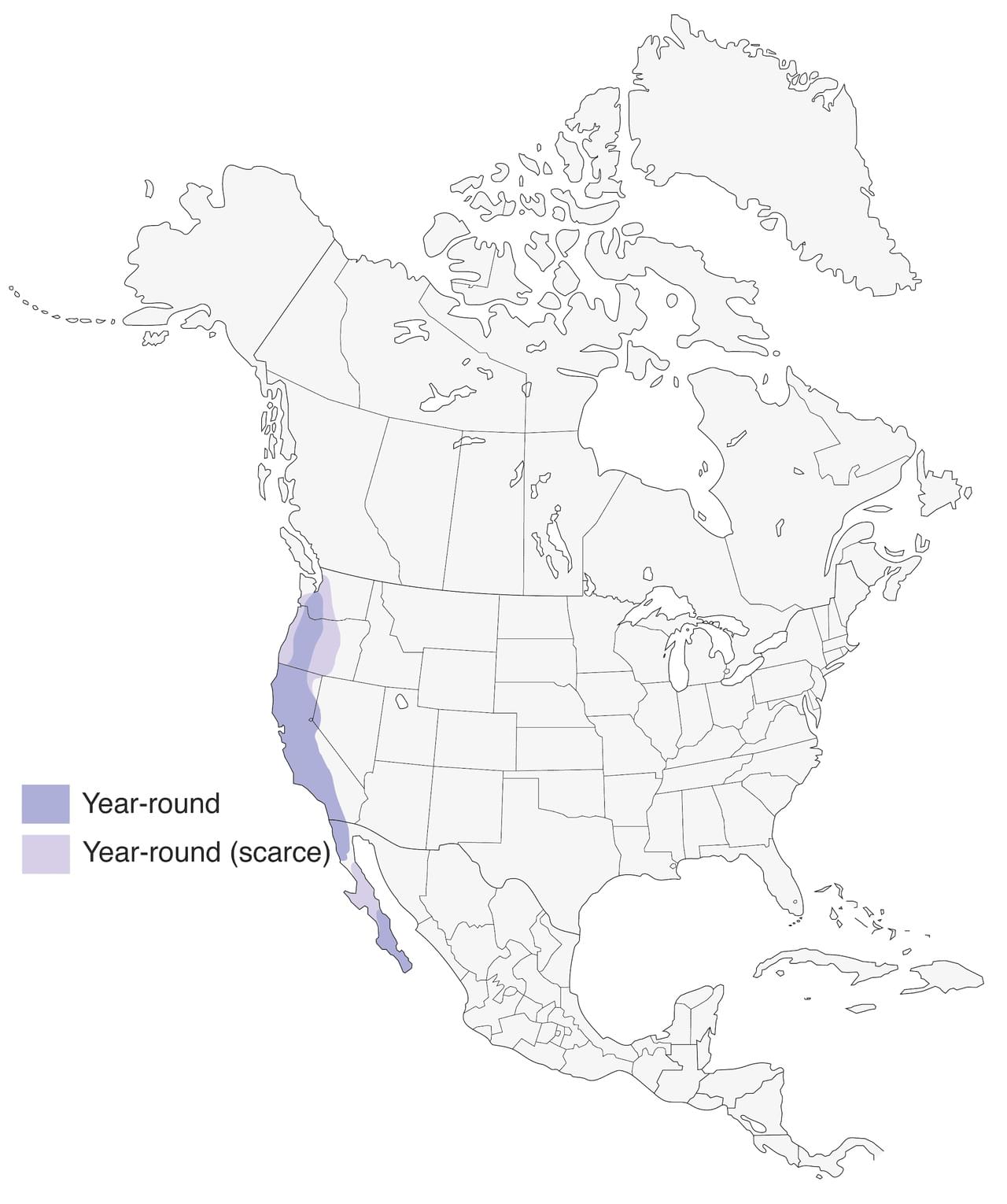
Habitat
California Scrub-Jays are found in scrub, oak woodlands, and suburban yards of the Pacific Seaboard from extreme southern British Columbia, Canada, through Baja California, Mexico. Look for them near oaks: in oak scrub, oak woodlands, and the oak savannah of California’s Central Valley. They also live in the dense, shrub-choked chaparral and coastal sage that lines coastal hillsides, as well as in mangrove forests at the tip of the Baja California peninsula, Mexico. Although this species is best known for eating acorns, in a few areas of the western Mojave desert they live in pinyon pine woodlands.
Food
California Scrub-Jays eat mostly insects and fruit during spring and summer. They switch to nuts and seeds during fall and winter, especially acorns. They also eat small animals such as lizards and nestling birds, sometimes shadowing adult birds to find their nests. For plant material, scrub-jays eat acorns and grass seeds; sunflower seeds and peanuts at feeders; as well as cultivated corn, almonds, walnuts, and cherries. To get at the meat of an acorn, California Scrub-Jays hold the nut between their feet and hammer at it with their stout bills. Once the shell splits open, they hold the nut steady with their lower mandible and peck at it with the hooked upper mandible to open the shell wider and pluck out the meat.
Behavior
California Scrub-Jays are great to watch because they’re animated, vocal, and playful. They move about in bold hops and lunges, looking around with sharp turns of the head. They're often found in flocks during fall and winter; particularly birds that don't have territories of their own (known as "floaters"), which can form flocks up to about 30 individuals. Much as in a group of chickens, a dominance hierarchy governs how members of these flocks behave toward each other. Both members of a breeding pair staunchly defend their territory year-round, keeping other scrub-jays away by flying at them, calling, and occasionally pecking or grappling. Pairs stay together throughout the year and typically stay together for several years (although about 11% of pairs split up each year, according to a California study). In years when the local acorn crop fails, California Scrub-Jays may abandon their territories for the winter, sparking a free-for-all for real estate the next spring when the birds return. Members of a pair often feed each other, particularly during the breeding season. The female does all the incubation. Nest predators include raccoons, weasels, skunks, squirrels, king snakes, gopher snakes, rattlesnakes, magpies, crows, and jays. Predators of adults and fledglings include bobcats, house cats, accipiters, and Great Horned Owls.
Nesting
Scrub-jay nests are made of a basket of twigs lined with rootlets, fine strands of plant fibers, and livestock hair. Nests take about 10 days to build and are about 6 inches (15 centimeters) across when finished. Both members of a pair help with building.
Appearance
Typical Sound

© Paul Fenwick / Macaulay Library
Size and Shape
A lanky bird with long, floppy tail and an often hunched-over posture.
Color Pattern
Blue and gray above, with a pale underside broken up by a blue necklace. In birds, the color blue depends on lighting, so California Scrub-Jays often look simply dark.
Plumage Photos
Similar Species
Woodhouse's Scrub-Jay overlaps with California Scrub-Jay only in a limited part of eastern California and western Nevada. Woodhouse's is more slender overall, with a slimmer, pointed bill; it's also a less intense blue, has grayer underparts, and has only an indistinct blue breast band. Pinyon Jay is the only other large blue bird without a crest that you're likely to see in the western United States. Pinyon Jays are stockier, shorter-tailed (almost crow-shaped) and plainer blue overall. If you live in Central Florida and think you've seen this species, you've seen the very similar but much less numerous Florida Scrub-Jay. (Another species, Island Scrub-Jay, lives only on Santa Cruz Island, off southern California.) If your blue bird has a black crest, it's a Steller's Jay; if the crest is blue you have a Blue Jay. Western Bluebirds and Lazuli Buntings are also blue, but are much smaller, with shorter legs, bill, and tail.
Did you know?!
- The California Scrub-Jay’s calls are a hallmark sound of the open West. Some 20 call types are known, and perhaps the best description comes from naturalist W. L. Dawson in 1923: “No masquerader at Mardi Gras has sprung such a cacophonic device upon a quiveringly expectant public. Dzweep, dzweep: it curdles the blood, as it is meant to do.”
- California Scrub-Jays have a mischievous streak, and they’re not above outright theft. They’ve been caught stealing acorns from Acorn Woodpecker caches and robbing seeds and pine cones from Clark’s Nutcrackers. They even seem aware of their guilt: some scrub-jays steal acorns they’ve watched other jays hide. When these birds go to hide their own acorns, they check first that no other jays are watching.
- You might see California Scrub-Jays standing on the back of a mule deer. They’re picking off and eating ticks and other parasites. The deer seem to appreciate the help, often standing still and holding up their ears to give the jays access.
